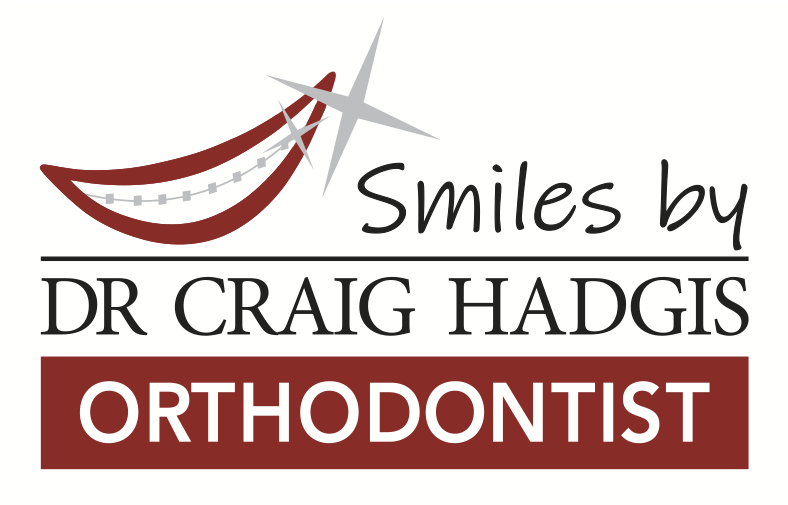September 9th, 2020

This might be the year that you’ve absolutely decided to do something to improve your smile. Perhaps your teeth are not as straight as you would like. Perhaps your bite is a bit off. Perhaps you want the increased confidence that a beautiful smile brings. But, for any number of reasons, perhaps you don’t want to sport traditional braces for a year or two. In that case, talk to Drs. Jimmy Glenos and Craig Hadgis about lingual braces!
What are lingual braces?
In normal braces, brackets are attached to the front of each tooth with a special dental cement, and rubber bands or clips within the brackets grip an arch wire that moves the teeth into alignment through gradual adjustments. These braces are very effective, but, even with ceramic or clear brackets, they are visible.
Lingual means “toward the tongue,” and this is the key difference between lingual braces and traditional types of orthodontic braces. With this option, brackets are custom-designed to be applied to the inside of your teeth. A precise treatment plan is designed specifically for you, and individually crafted arch wires (again, on the inside of the teeth) guide your teeth to their best alignment. The resulting braces are almost impossible to detect.
Will lingual braces work for you?
You might be a good candidate for lingual braces if:
- You want the least visible orthodontic treatment available.
- You don’t have a major malocclusion (bite problem). A severe overbite might not leave room for the brackets.
- Your tooth surface is large enough for lingual brackets. Children or adults with small teeth might not be ideal candidates.
Because lingual braces are more difficult to install and adjust, orthodontists require special training and education to provide them to patients. If you think that lingual braces might be a good fit for you, talk to a member of our St. Johns or St. Augustine, FL team. We are happy to provide the information you will need to decide if lingual braces are the best option for you, and the expertise to design your custom treatment if you choose them. We want the best outcome for you and your smile, and there is absolutely no “perhaps” about that.
September 2nd, 2020

For more than a century, braces have helped patients achieve straighter teeth, and treatment methods continue to emerge. Today, braces have the potential to be discreet while still producing great results.
If you want straighter teeth without the look of traditional metal braces, Drs. Jimmy Glenos and Craig Hadgis can offer multiple options to give you the smile of your dreams.
Clear Aligners
Clear aligners use a series of custom-made trays that shift teeth gradually into place. For patients who need mild-to-moderate corrections, this can be a great option.
Aside from being clear, another benefit is that you can change these aligners at home instead of having to visit our St. Johns or St. Augustine, FL office every few weeks. They can even be removed while you eat and clean your teeth!
If you wear the aligners as instructed, you could have straighter teeth in about six to 12 months.
Lingual Braces
Like traditional braces, Incognito™ lingual braces are attached to teeth. The difference is that they are attached to the back of your teeth so you won’t be able to see them.
This is an appealing option for patients who need moderate-to-severe corrections. The braces are non-removable and will be adjusted during your regular orthodontic visits. They yield highly successful results.
If you want a straighter smile but are not sure whether you are a candidate for either of these options, give Drs. Jimmy Glenos and Craig Hadgis a call today! Our St. Johns or St. Augustine, FL team would be happy to identify the best treatment option for your needs.
August 26th, 2020

Contrary to popular belief, not all braces are created equal. More importantly, not all braces look like the hulking headgear found in 1980s teen movies. If you’re embarking on an orthodontic journey, that should give you a sigh of relief. Orthodontic technology has come a long way over the years. As a result, Damon Smile braces offer a world without elastic ties. Imagine that! Here are three things that make Damon Smile braces different from conventional braces.
More Comfort and Fewer Adjustments
Damon Smile braces use light, “shape memory” titanium wires. Low-friction force guides the teeth into place, creating less discomfort for you than conventional braces. Instead of elastics, Damon Smile braces use a specialized slide that helps the archwire guide the teeth into place. The teeth move freely, quickly, and comfortably. Without traditional ties and elastics, Damon Smile braces require no tightening and fewer adjustments.
Less Treatment Time
For the most part, conventional braces are worn anywhere from 18 months to two years. However, due to its unique, elastics-free technology, treatment with Damon Smile braces is often considerably faster. If you’re starting on an orthodontic journey, then chances are that's the type of thing you want to hear. While the amount of time a person wears braces varies from case to case, Damon braces typically get the job done faster than conventional braces.
Fewer Orthodontic Appointments
Coming to our St. Johns or St. Augustine, FL office is probably not on the top of your list of things do, though we do love seeing you! However, Damon braces offer a convenient and hassle-free orthodontic experience. Why? The self-ligating braces require no tightening and fewer adjustments, which in turn means you're going to have far fewer visits with Drs. Jimmy Glenos and Craig Hadgis during your treatment. Chances are, that's the sort of thing that's going to put a smile on your face.
August 19th, 2020

Patients who want corrective braces but don’t like the look of traditional braces with the metal showing on the front have an alternative in lingual braces. As opposed to metal braces visible across the front of the teeth, lingual braces are placed on the rear of the teeth. Most of the metal in lingual braces is not visible to other people, unless you have widely-spaced teeth. For those who make good candidates for lingual braces, Drs. Jimmy Glenos and Craig Hadgis and our team at Smiles by Glenos & Hadgis Orthodontists will tell you it is a great alternative with a significant cosmetic benefit.
Benefits of lingual braces
The primary benefit of lingual braces is that the metal is on the back of the teeth, which is very rarely seen by anyone. Patients can comfortably talk and smile, without the added worry of someone noticing the metal braces on their teeth. Another advantage of lingual braces is that they are just as effective as traditional braces and are worn for the same amount of time. They are also helpful for people who play contact sports or play wind instruments because lingual braces don’t get in the way. Finally, lingual braces are a great option for patients who have are sensitive to plastic and can’t wear other types of clear or invisible braces.
Who can get lingual braces?
While many patients qualify for lingual braces, not everyone who needs corrective orthodontic treatment will be a good candidate. The best candidates are teenagers and adults with normal-sized teeth. Children who get braces often have smaller teeth, so lingual braces may not be suitable. A patient’s bite also makes a difference, because a deep vertical overbite makes lingual braces difficult to place.
Talk to Drs. Jimmy Glenos and Craig Hadgis the possibility of lingual braces if you’re thinking about correcting your smile but don’t like the idea of metal braces worn on the front. Lingual braces have the same basic benefits of straightening teeth, correcting misalignments, and fixing overbites and underbites that regular braces offer, but are a great aesthetic alternative.
For more information about lingual braces, or to schedule an initial consultation with Drs. Jimmy Glenos and Craig Hadgis, please give us a call at our convenient St. Johns or St. Augustine, FL office!




